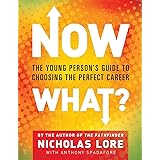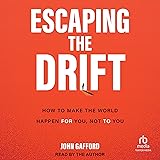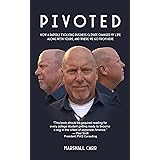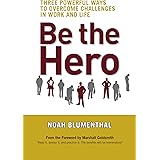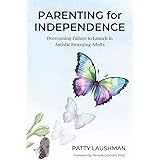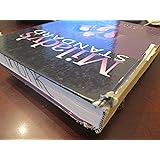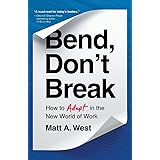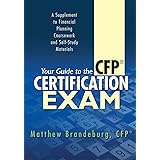Are you tired of feeling like your job interviews aren’t quite hitting the mark? Do you wonder what hiring managers are *really* looking for beyond your resume? The accompanying video provides some incredibly insightful psychological strategies to help you connect with interviewers and significantly boost your chances of landing that dream job. It delves into subtle yet powerful techniques that can make all the difference, transforming your approach from merely answering questions to truly building rapport and demonstrating your full potential.
The Subtle Art of Mirroring and Pacing in Job Interviews
One of the most compelling insights from Dr. Donald Moin, a renowned sales psychologist, highlighted in the video, reveals a technique called mirroring or pacing. This isn’t about overtly mimicking someone; rather, it’s about subtly aligning yourself with the other person’s communication style and energy. Super persuasive individuals, like top salespeople, instinctively employ this method to build trust and connection, and it’s a powerful tool to master for your next job interview.
Mirroring works on both verbal and non-verbal levels. Verbally, this means adjusting your speaking pace to match the interviewer’s. If they speak quickly, you might respond with a slightly faster tempo, demonstrating shared energy. Conversely, if their speech is measured and thoughtful, slowing down your own delivery can create a sense of calm and understanding. The aim is to create a harmonious flow, making the interviewer feel more comfortable and understood, often without them even realizing why.
Non-verbal pacing extends to body language. This could involve subtly matching their posture, nodding in agreement when they nod, or even using similar hand gestures if appropriate and natural. Again, the key is subtlety – a direct imitation can appear disingenuous or even mocking. Instead, it’s about reflecting their general demeanor and energy. This subconscious synchronization sends a powerful message: “This person is like me; I can trust them.” Trust, as the video rightly points out, is the hidden message and a cornerstone of successful human interaction, especially when you are selling your skills and labor.
Building Rapport Beyond Words
The essence of mirroring is about creating subconscious rapport. When an interviewer feels a natural connection with you, they are more likely to perceive you favorably. This isn’t about manipulation but about effective communication and genuine engagement. By tuning into the interviewer’s style, you demonstrate adaptability and empathy, both highly valued traits in any professional setting.
Beyond the Script: The Power of Active Listening
Another crucial element for interview success, strongly emphasized in the video, is the shift from planning your next answer to truly listening to the interviewer. This might seem obvious, yet it’s surprisingly difficult to execute when under pressure. Many job seekers are so focused on delivering their rehearsed answers that they miss the nuances of the interviewer’s questions or comments.
Active listening means more than just hearing words; it means understanding the underlying intent and emotion. It involves:
- **Paying full attention:** Eliminate internal distractions and focus entirely on the interviewer.
- **Clarifying questions:** If something isn’t clear, ask for clarification. This shows engagement, not confusion.
- **Reflecting and summarizing:** Briefly rephrase what you’ve heard to confirm understanding before responding.
- **Observing non-verbal cues:** The interviewer’s body language can tell you as much as their words.
When you actively listen, your responses become more targeted, thoughtful, and impactful. You’re able to address the interviewer’s specific concerns, demonstrate genuine interest in the role, and ultimately have a more authentic and productive conversation. This approach reduces your own anxiety because you’re present in the moment rather than dwelling on future statements.
What Hiring Managers Really Seek: The Two Core Questions
Ultimately, all the skills and experiences you hopefully possess culminate in answering two fundamental questions in the minds of hiring managers. As the interviewee aptly explains, these are the two real questions bosses are trying to answer during any interview:
- **Can the person do the job?**
- **Will the person do the job?**
Understanding these two overarching inquiries is paramount to truly nailing an interview.
Can You Do The Job? Demonstrating Competence
This first question primarily assesses your qualifications, knowledge, skills, abilities, and experience. It’s about your technical capabilities and whether you have the necessary toolkit to perform the required duties. Often, much of this can be gleaned from your resume, portfolio, or initial screening questions. However, the interview is your chance to elaborate, provide concrete examples, and connect your past experiences directly to the role’s requirements.
To impress here, focus on quantifiable achievements and specific situations. Don’t just list responsibilities; describe the impact you made. For instance, instead of saying, “I managed projects,” explain, “I led a cross-functional team to deliver Project X 15% under budget and two weeks ahead of schedule.” This demonstrates not just competence, but results. Be ready to discuss the tools, methodologies, and expertise you bring to the table.
Will You Do The Job? Revealing Drive and Character
This second question delves much deeper, probing into your motivation, work ethic, and character traits. It’s about more than just having the skills; it’s about whether you possess the energy, drive, persistence, communication skills, and leadership qualities to *apply* those skills effectively and consistently. Hiring managers want to know if you’ll be a proactive, engaged, and positive contributor to their team and organization.
Demonstrating you “will do the job” often comes through your attitude, your responses to behavioral questions, and the insights revealed in your work history. They’re looking for signs of resilience, initiative, problem-solving capabilities, and how you interact under pressure. This is where subtle techniques like mirroring, active listening, and thoughtful, authentic responses come into play. Your enthusiasm, your ability to articulate your motivations, and your demonstrated passion for the work all speak volumes to this question.
Your Work History: A Narrative of Motivation
The video emphasizes that your work history serves as a powerful indicator of your motivations and character traits. It’s not just a timeline of positions held, but a rich narrative of how you’ve grown, faced challenges, and contributed. Savvy interviewers will use your past experiences to predict your future performance, particularly regarding your “will do the job” potential.
When discussing your work history, don’t just recount tasks. Instead, frame your experiences using the STAR method (Situation, Task, Action, Result) to illustrate how your actions reflect positive character traits. For example, if asked about a challenging project, describe the *Situation*, your specific *Task*, the *Action* you took (showcasing problem-solving, persistence, communication), and the positive *Result*. This approach allows you to weave a compelling story that highlights your drive, leadership, and ability to get things done, confirming that you not only *can* do the job, but you *will* do it with dedication and impact.


